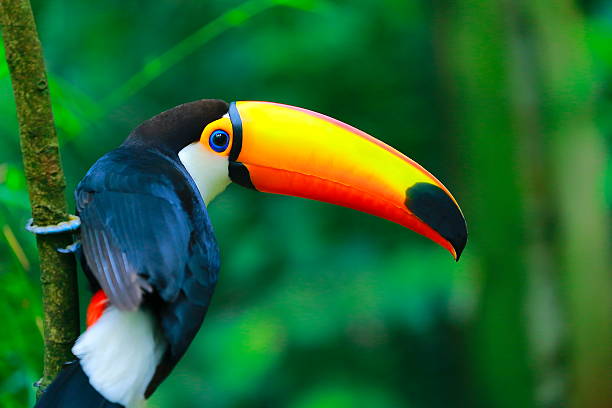Introduction
Rainforest animals are some of the most intriguing and diverse creatures on our planet. These lush, biodiverse ecosystems are home to a remarkable array of wildlife, each with its own set of adaptations and survival strategies. In this article, we will take an in-depth look at rainforest animals, exploring their habitat, behavior, and the incredible ways they have evolved to thrive in this challenging environment.
Exploring the Rainforest Animals
Rainforest animals represent a remarkable tapestry of life. Let’s dive into this fascinating world:
Rainforest Animals: Masters of Adaptation
Rainforest animals have evolved over millions of years to survive in their unique environment. From the colorful toucans to the elusive jaguars, these creatures have honed their skills to thrive amidst the dense vegetation and heavy rainfall. Some adaptations include:
- Camouflage: Many rainforest animals, like the green tree python, have developed intricate patterns and colors that allow them to blend seamlessly into their surroundings.
- Symbiotic Relationships: Some species, such as leaf-cutter ants, form intricate partnerships that benefit both parties. Ants collect leaves to feed fungi, and in return, fungi provide sustenance for the ants.
- Arboreal Abilities: The majority of rainforest animals are adept climbers, utilizing their prehensile tails and strong limbs to navigate the canopy. Sloths, for instance, are incredibly slow but skilled tree-dwellers.
The Rainforest Canopy: A World Above
One of the most distinctive features of rainforests is the canopy – the upper layer of trees that forms a dense network of branches and leaves. Many animals make their homes here, including:
- Howler Monkeys: These vocal primates are famous for their loud calls that can be heard for miles. They spend most of their lives in the canopy, where they find food and shelter.
- Orangutans: These gentle giants are excellent climbers, using their long arms to swing effortlessly through the trees. They are also known for their intelligence and tool-making abilities.
Diversity in the Understory
Beneath the canopy lies the understory, a dimly lit layer of vegetation where unique creatures thrive, such as:
- Okapi: Often referred to as the “forest giraffe,” the okapi is a relative of the giraffe but has zebra-like stripes on its legs. It’s a reclusive herbivore that grazes on the understory plants.
- Poison Dart Frogs: These tiny but brilliantly colored frogs are known for their toxic skin secretions, which some indigenous people use to poison their blowgun darts. They are a prime example of the vibrant biodiversity in the rainforest.
Rainforest Animals on the Forest Floor
Even the forest floor, where sunlight rarely penetrates, is teeming with life. Some remarkable rainforest dwellers include:
- Jaguars: These powerful big cats are apex predators in the rainforest. With their sleek, spotted coats, they are perfectly suited for stealthy hunting.
- Leafcutter Ants: As mentioned earlier, these ants are essential in maintaining the rainforest ecosystem by processing organic matter and providing a food source for many creatures.
Frequently Asked Questions
Are rainforests the same worldwide?
No, rainforests can be found in various parts of the world, including South America, Africa, Southeast Asia, and Australia. While they share some similarities, each has its own unique ecosystems and animal species.
How do rainforest animals adapt to the constant rainfall?
Rainforest animals have evolved various strategies to cope with the incessant rain. Some have waterproof fur or feathers, while others seek shelter during heavy downpours.
What are the major threats to rainforest animals?
Deforestation, habitat destruction, and the illegal wildlife trade are significant threats to rainforest animals. Climate change also poses challenges by altering their natural habitats.
Can you visit rainforests to see these animals?
Yes, many rainforest areas are open to eco-tourism. However, it’s essential to choose responsible tour operators that prioritize conservation and minimize the impact on the ecosystem.
Do rainforest animals have any medicinal value?
Some rainforest plants and animals have been used in traditional medicine by indigenous peoples for centuries. However, it’s crucial to ensure that such practices are sustainable and don’t harm endangered species.
How can we contribute to rainforest conservation?
Supporting organizations dedicated to rainforest conservation, reducing deforestation by using sustainable products, and spreading awareness about the importance of these ecosystems are all meaningful ways to help.
Conclusion
Rainforest animals are a testament to the incredible diversity and adaptability of life on Earth. These magnificent creatures continue to inspire awe and wonder, reminding us of the urgent need to protect their habitats and ensure their survival for generations to come.


